Chair and Crown
Making the Cardiff National Eisteddfod Chair 2018
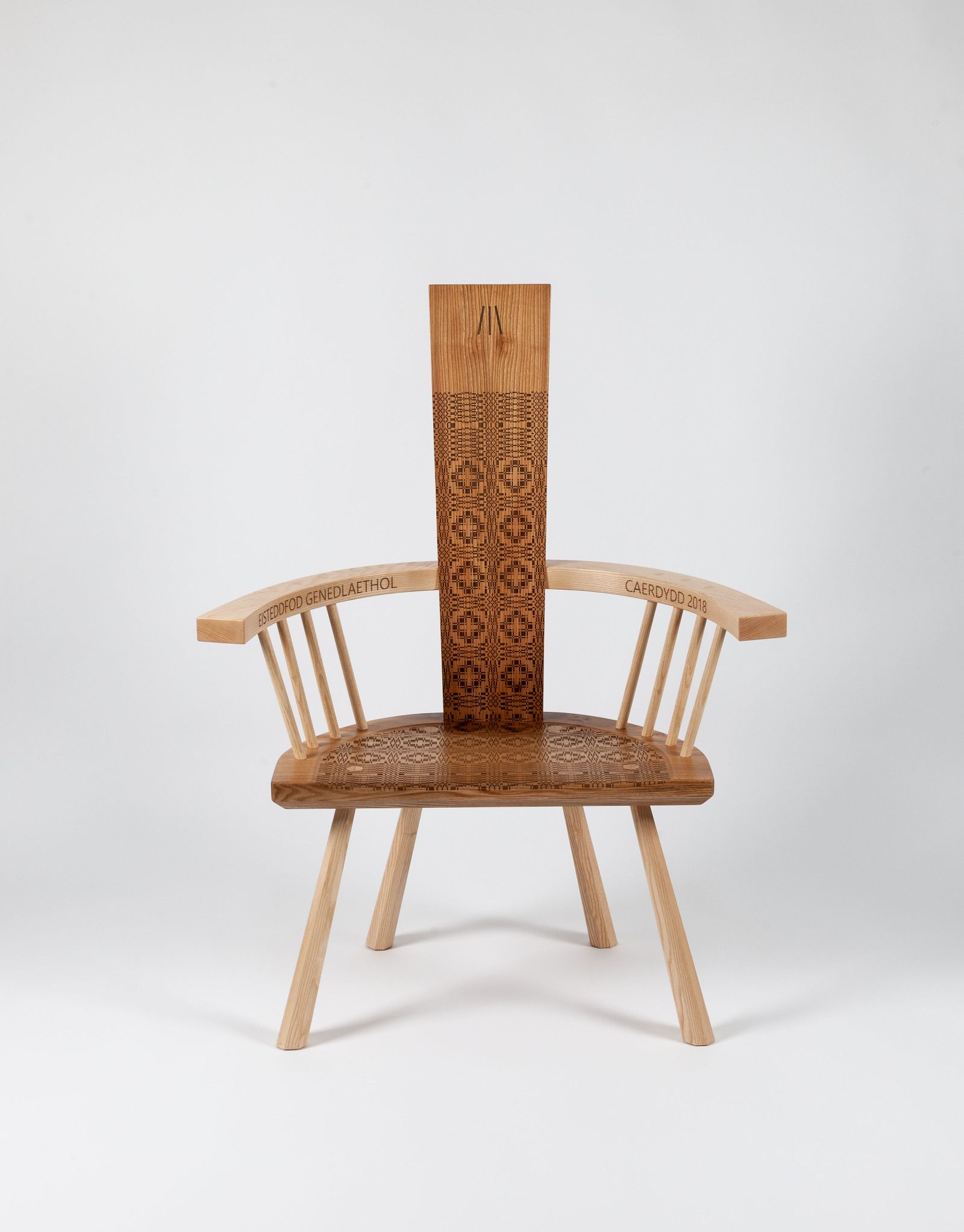
"My design is inspired by a number of different chairs I have researched in the St Fagans collection. I have designed a modern chair which nods to the traditional yet has the presence of a ceremonial chair. This is achieved through a number of design elements including wide heavy seat, open arms and high back. Traditional Welsh design is further celebrated through the use of a Welsh wool pattern used in the surface decoration of the chair, based on a blanket woven at Esgair Moel Wollen Mill at St Fagans".

Chris Williams is the designer and maker of the 2018 Cardiff National Eisteddfod chair. Chris works as a sculptor and is a member of the Royal British Society of Sculptors. He lives in Pentre and has a workshop and gallery in Ynyshir, Rhondda.
The Chair for the Cardiff 2018 Eisteddfod is sponsored by Amgueddfa Cymru-National Museum Wales to celebrate the 70th birthday of St Fagans National Museum of History.
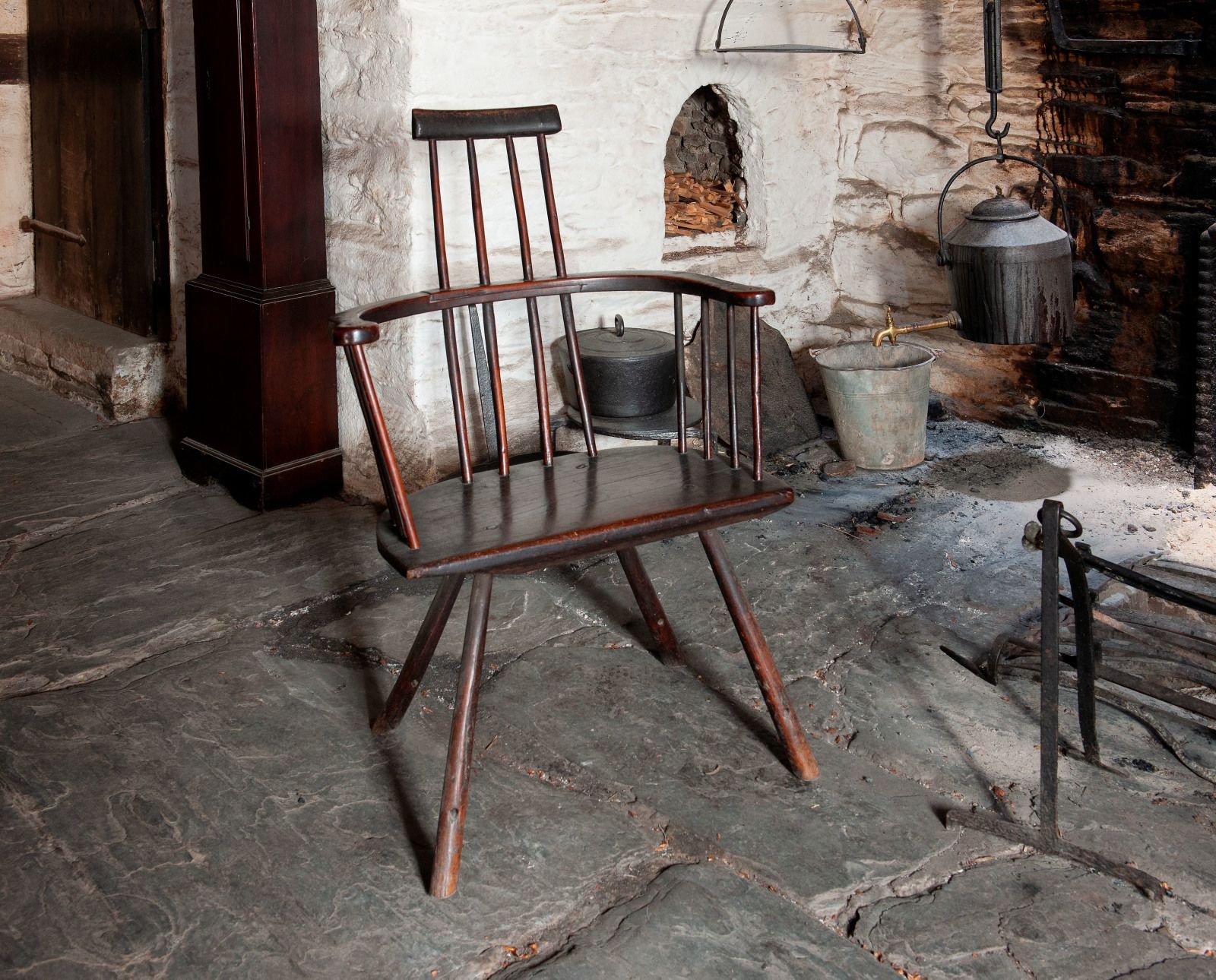
Chris was inspired by the form of the stick chairs in St Fagans collection. This example was originally made in Trealaw, a few miles from Chris’ workshop.
Parts of the chair were made at St Fagans, in a new building called Gweithdy (Welsh for workshop). Chris demonstrates the various processes of making the chair in this video:
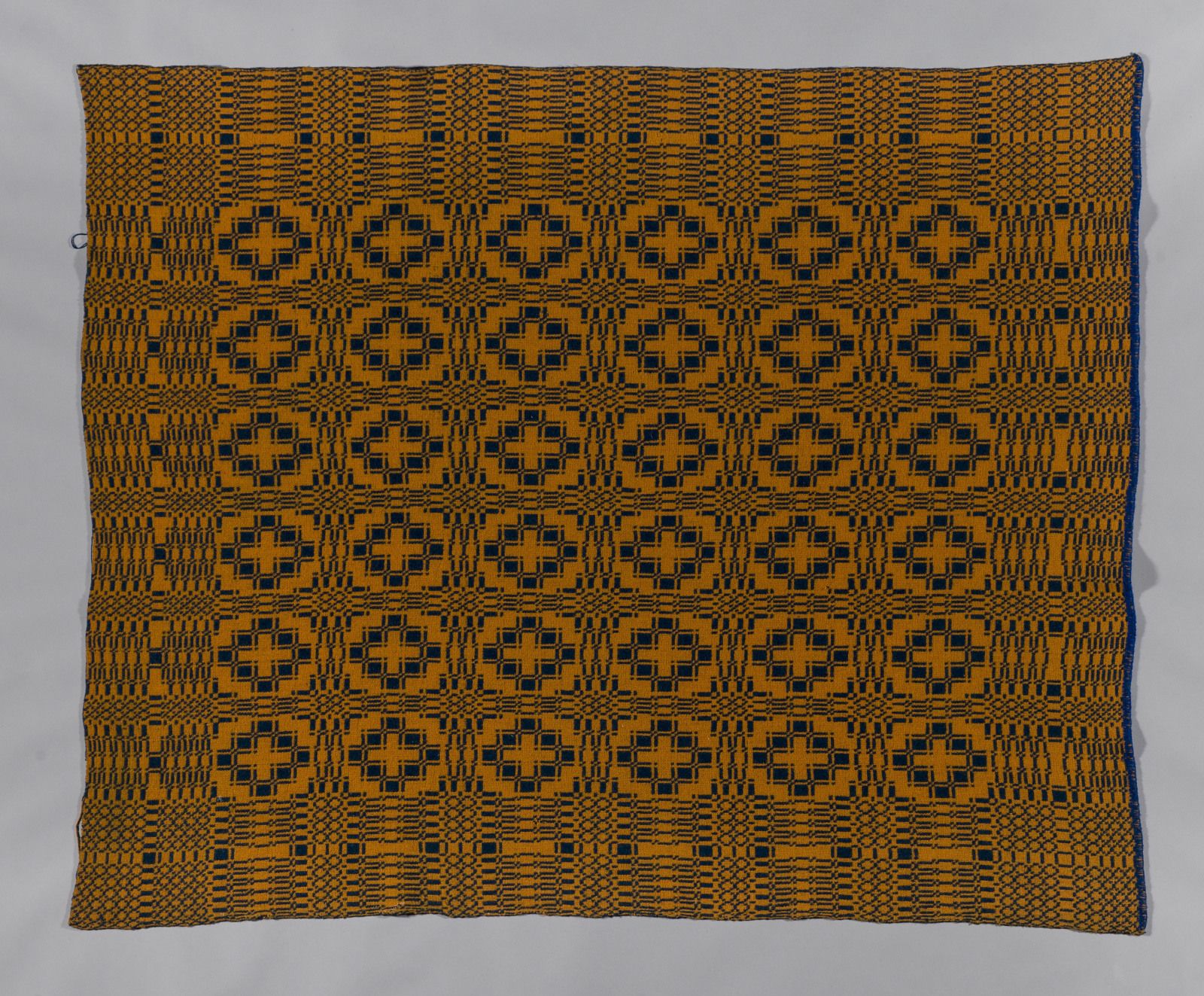
Blanket woven at Esgair Moel Woollen Mill, one of the first buildings to be re-erected at St Fagans in 1952.
Making the Cardiff National Eisteddfod Crown 2018
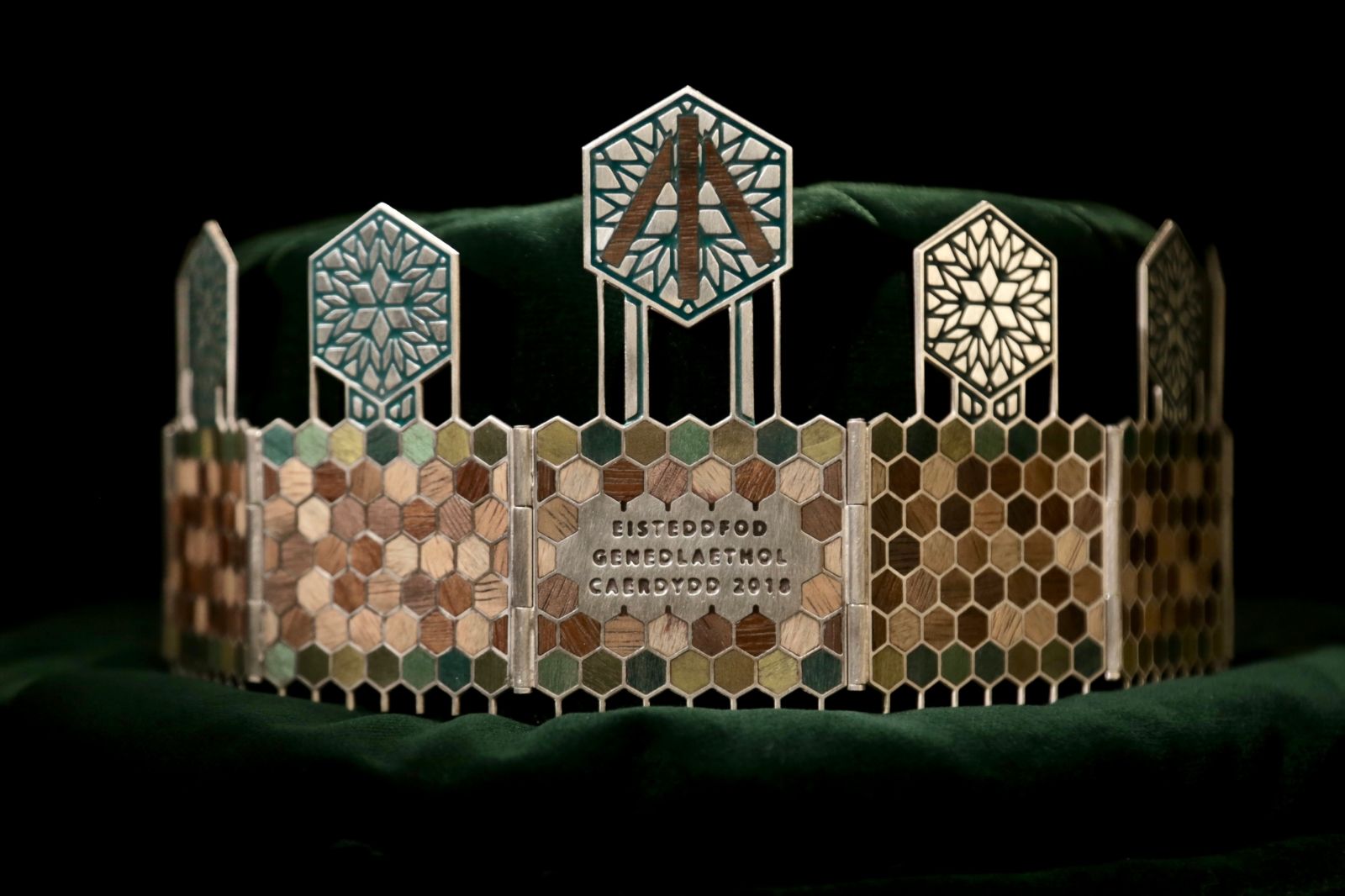
"I’ve always really enjoyed working with wood and I’m fascinated with the different grains and contrasting colours. For the crown, I’ve inlayed five types of precision cut wood veneers by hand into geometrically structured silver and then assembled to create the structure."
Laura Thomas
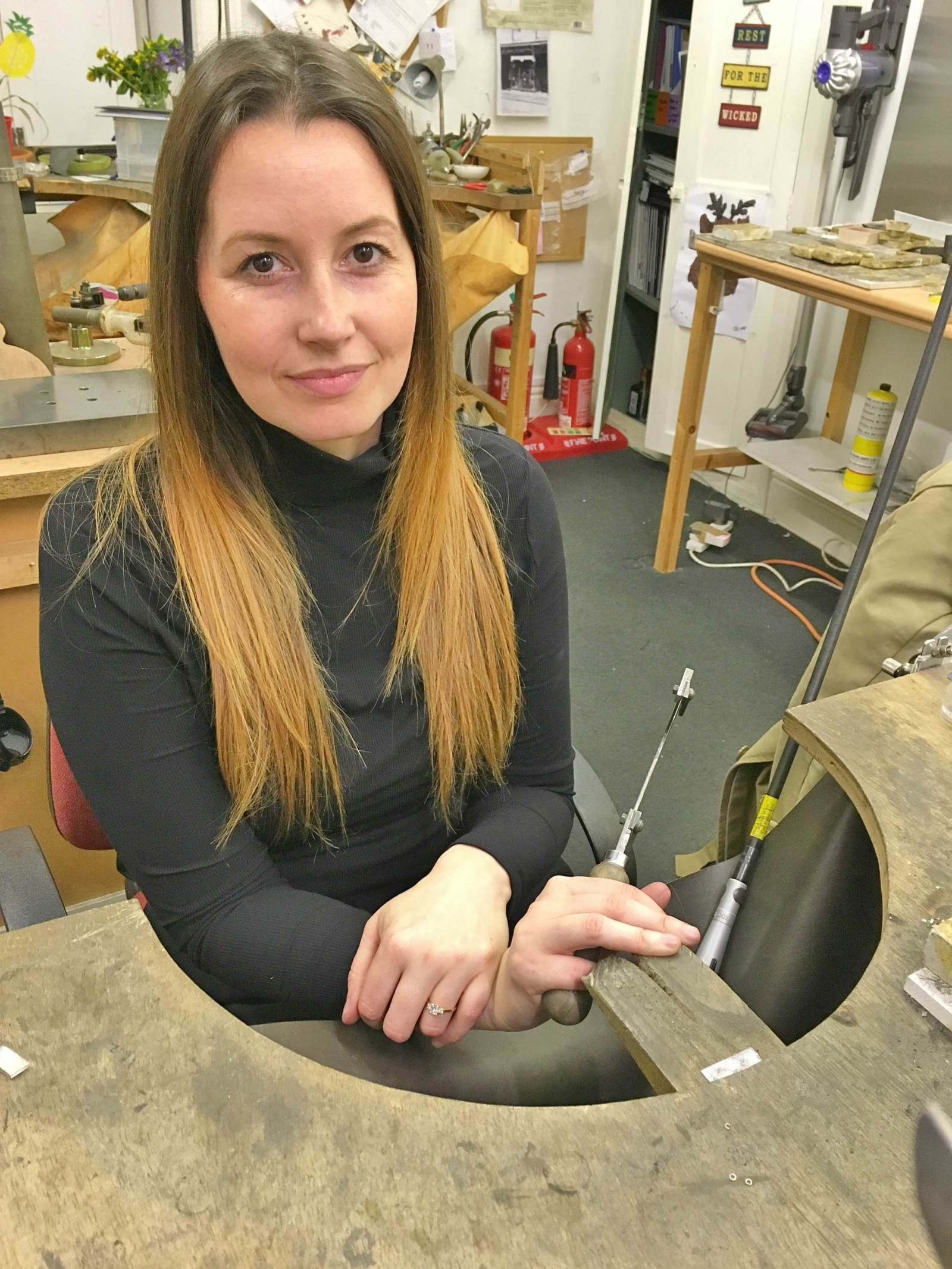
The contemporary jeweller Laura Thomas from Neath created the 2018 National Eisteddfod Crown. Cardiff University sponsored its making.
Laura worked for 400 hours to produce a unique crown. It is modern yet respectful of the Eisteddfod’s traditions. Her design derives from her signature technique, parquetry. She inlays wood veneer into sterling silver. The crown has more than 600 hexagonal inlays, all added by hand.
Laura’s love of working with wood came from her grandfather Jack Owen, who used to make small carved animals from solid wood and plywood.
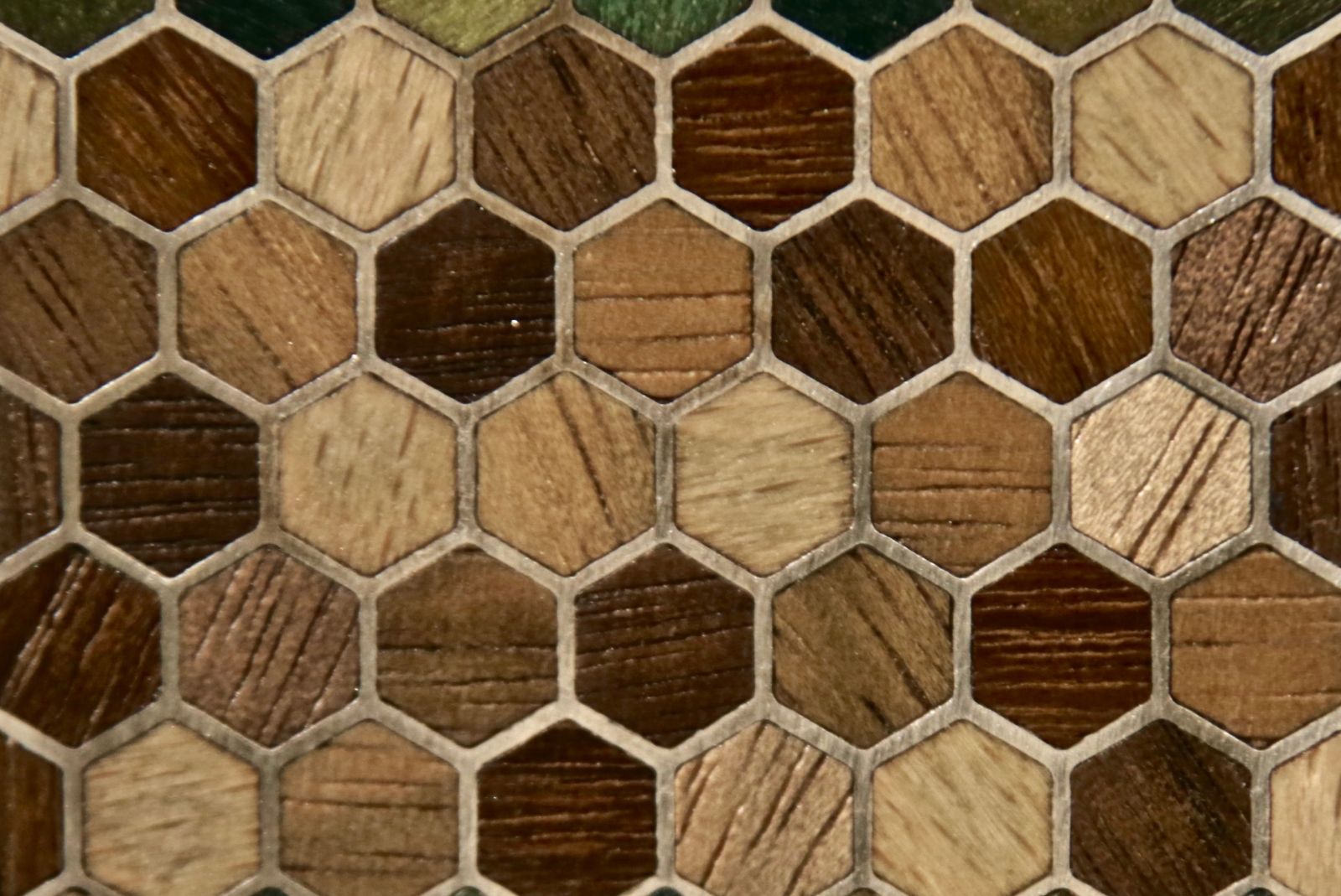
Chairing the Bard
The ceremony of chairing the bard is held on the Friday of National Eisteddfod week. The chair is awarded for writing the awdl, a collection of poems in strict metre.
It’s an old custom. When Lord Rhys held the first eisteddfod in Cardigan Castle in 1176, the prize for the chief poet and chief musician was a chair each. A few years after establishing the National Eisteddfod in the late 1800s, a chair was commissioned annually especially for the ceremony.
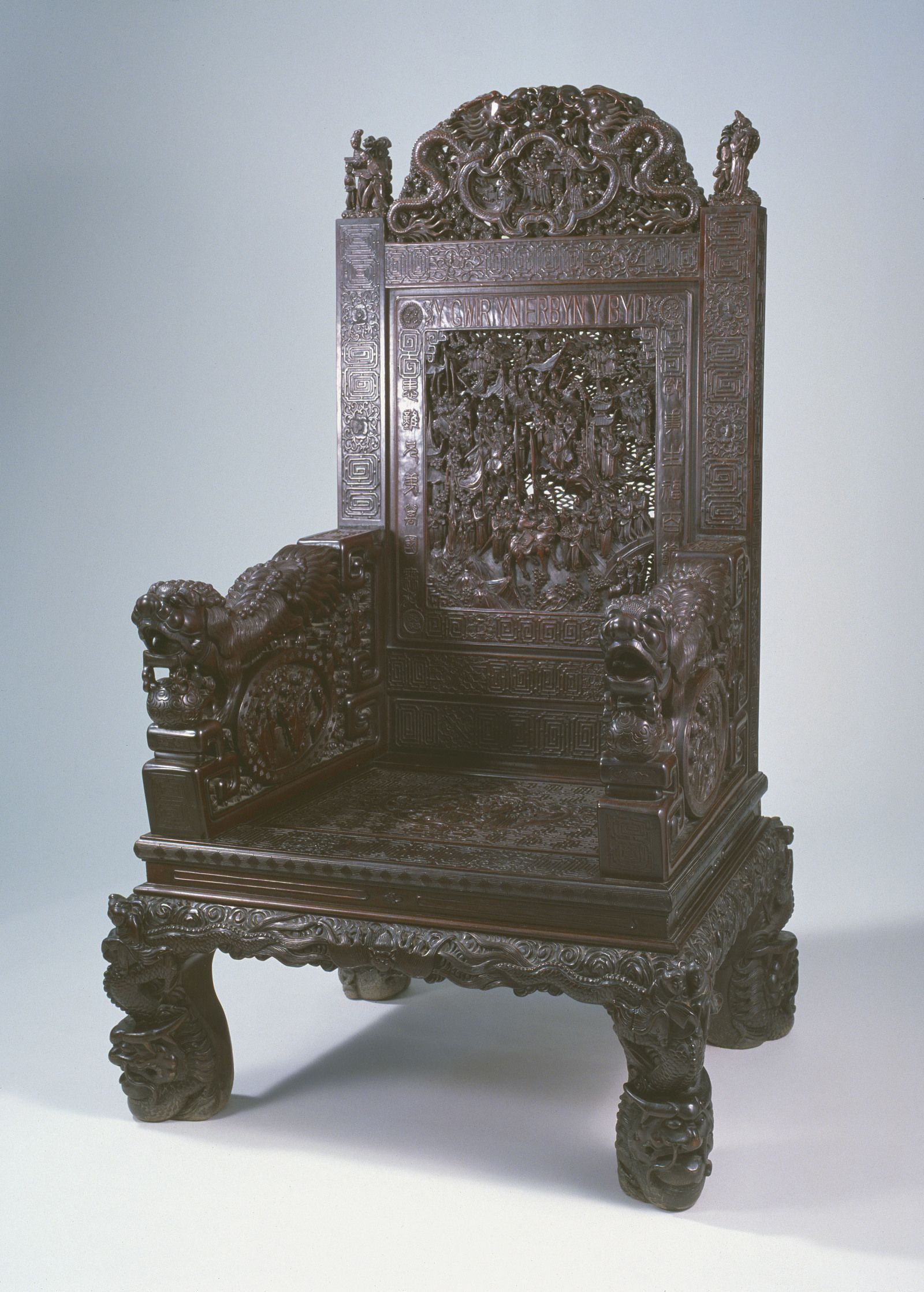
Welsh Societies across the world presented chairs to the Eisteddfod during the 1920s and 1930s. In 1933 a Welshman living in Shanghai, Dr John Robert Jones, commissioned the chair for the Wrexham National Eisteddfod.
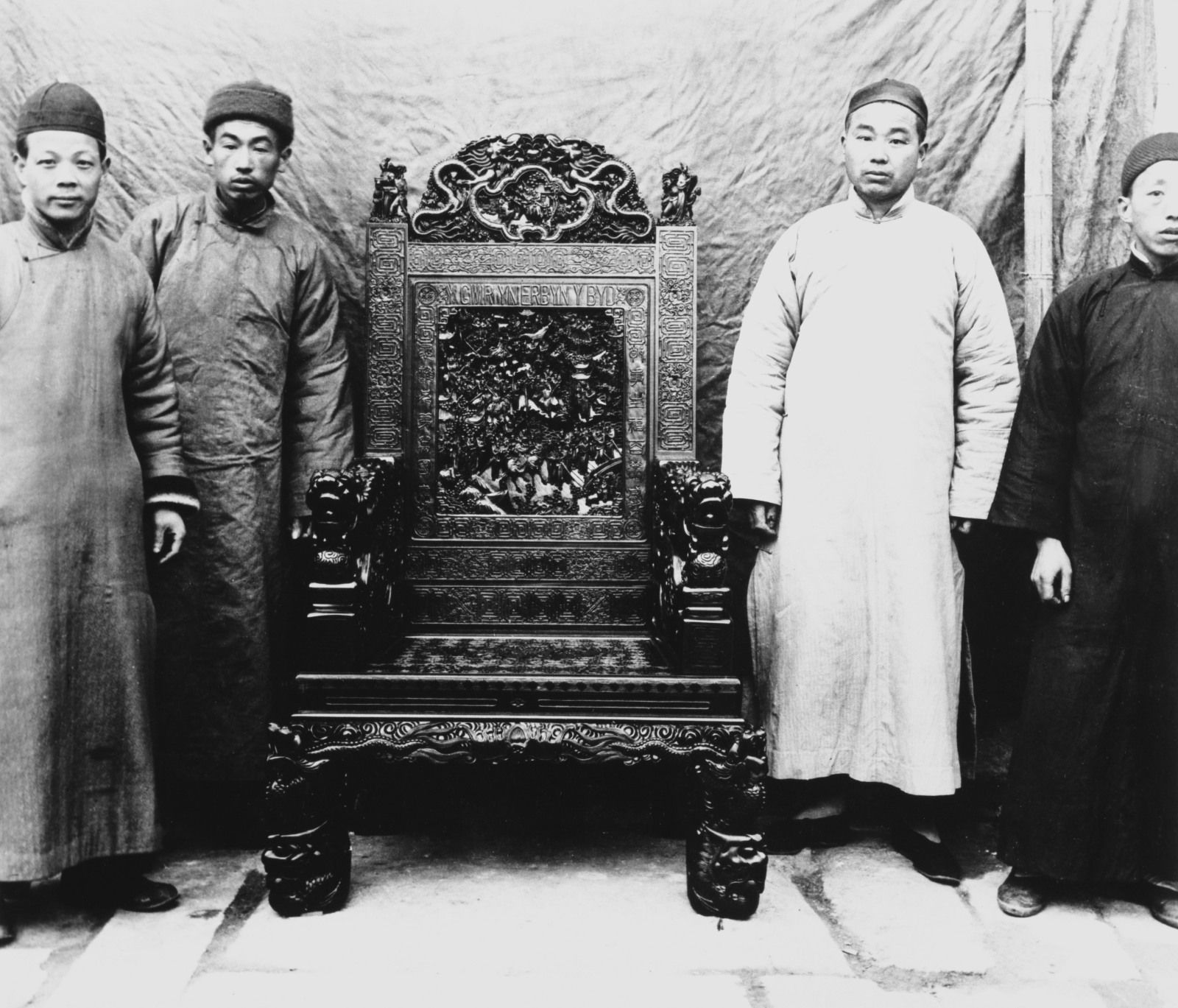
It took over a year to carve the Shanghai chair. It was made in a Catholic orphanage T’ou-se-we, on the outskirts of the city.
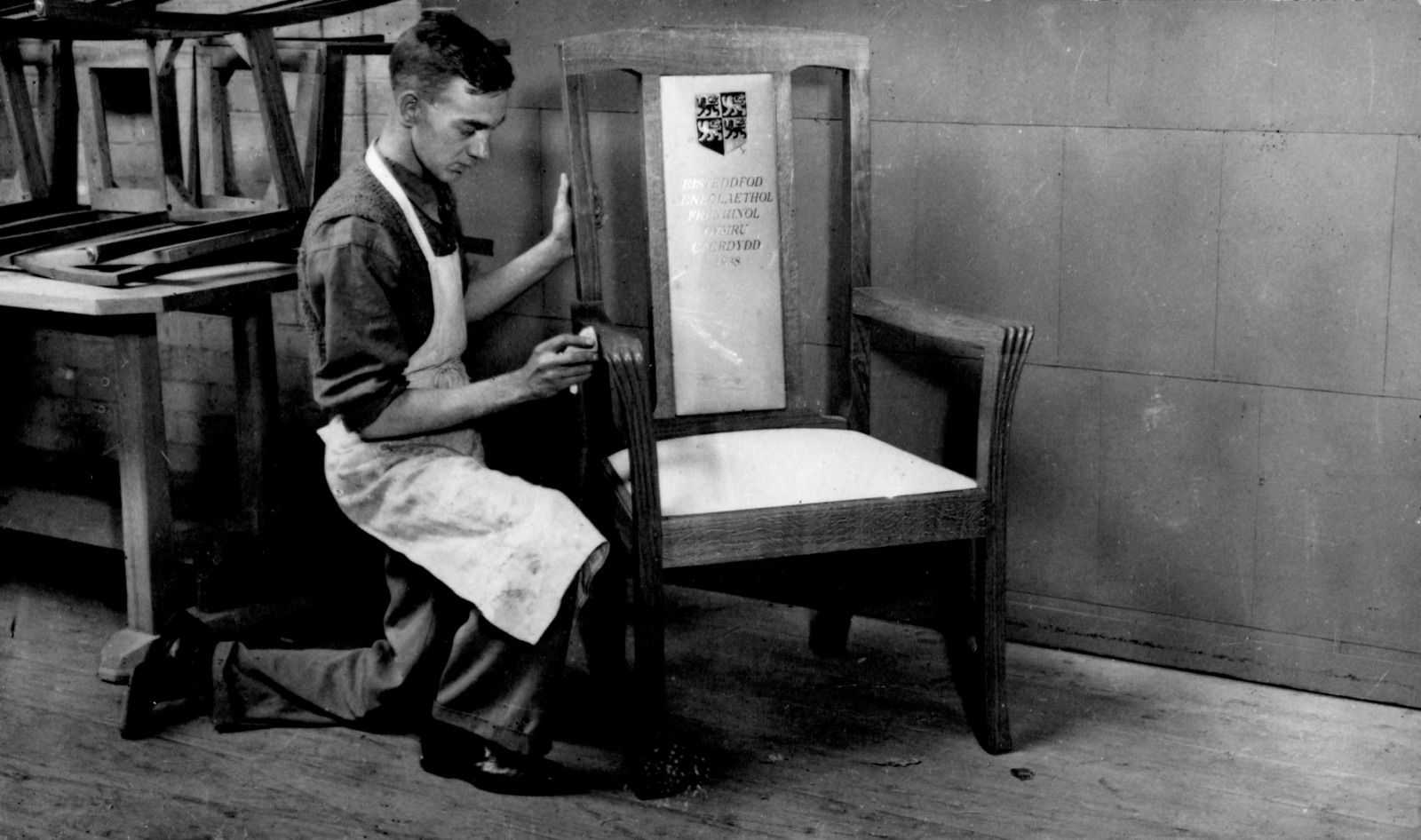
For the Cardiff Eisteddfod of 1938, a simply-designed chair was made in Wales by the Brynmawr Furniture Company. The winner was the poet Gwilym R. Jones. No chair was awarded when the Eisteddfod returned to Cardiff in both 1960 and 1978 , but Hilma Lloyd Edwards won the chair in Cardiff in 2008.
Crowning the Bard
The ceremony of crowning the bard is held on the Monday of National Eisteddfod week. The crown is awarded for a long poem in free metre, called a pryddest.
The competition for the pryddest was first introduced to the National Eisteddfod in 1867. A medal rather than a crown was awarded that year.
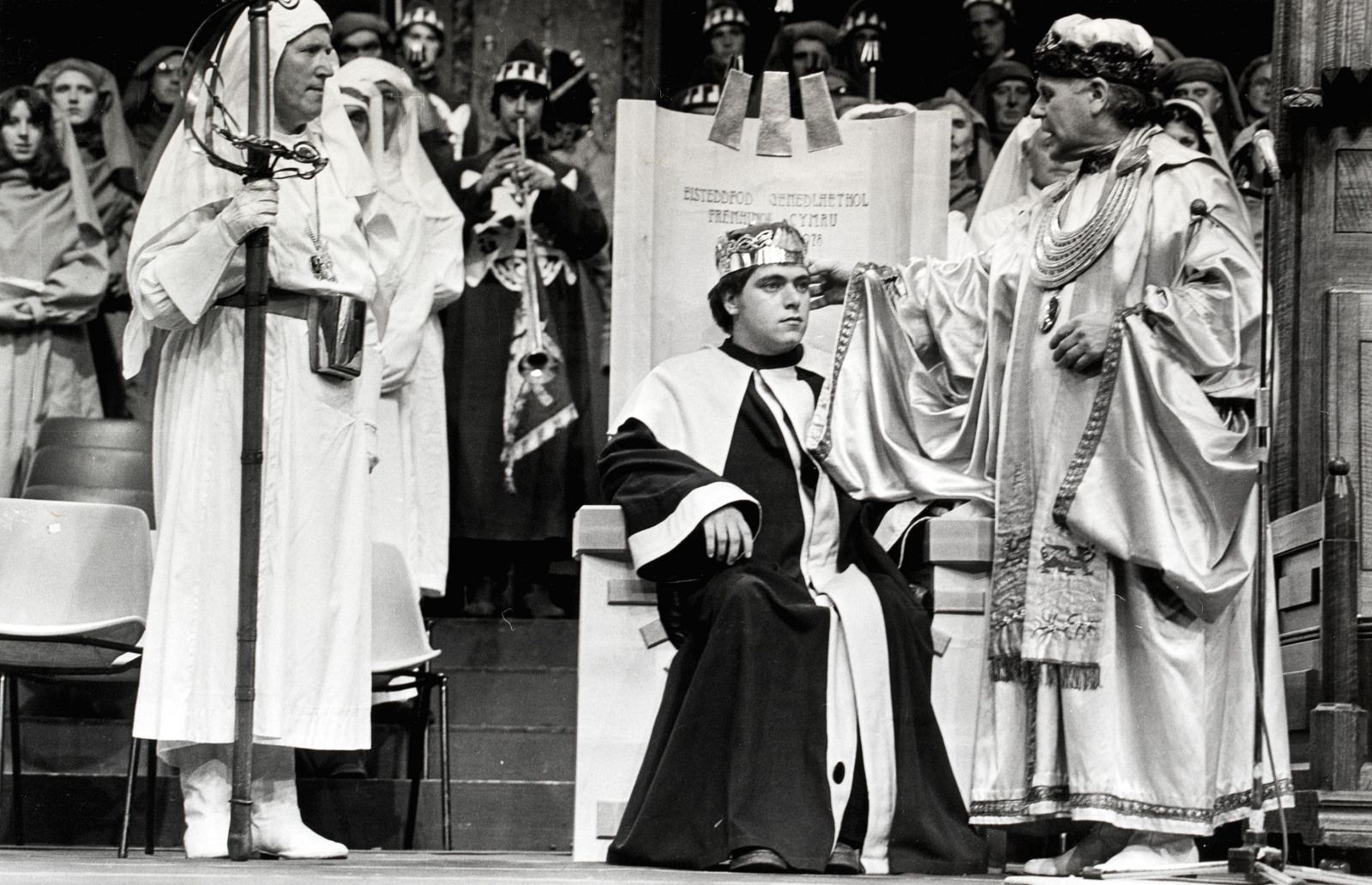
Crowning Sion Eirian at the Cardiff National Eisteddfod in 1978. At 24 year old, he was the youngest to win the crown. In 2014 Guto Dafydd also won the crown aged 24.
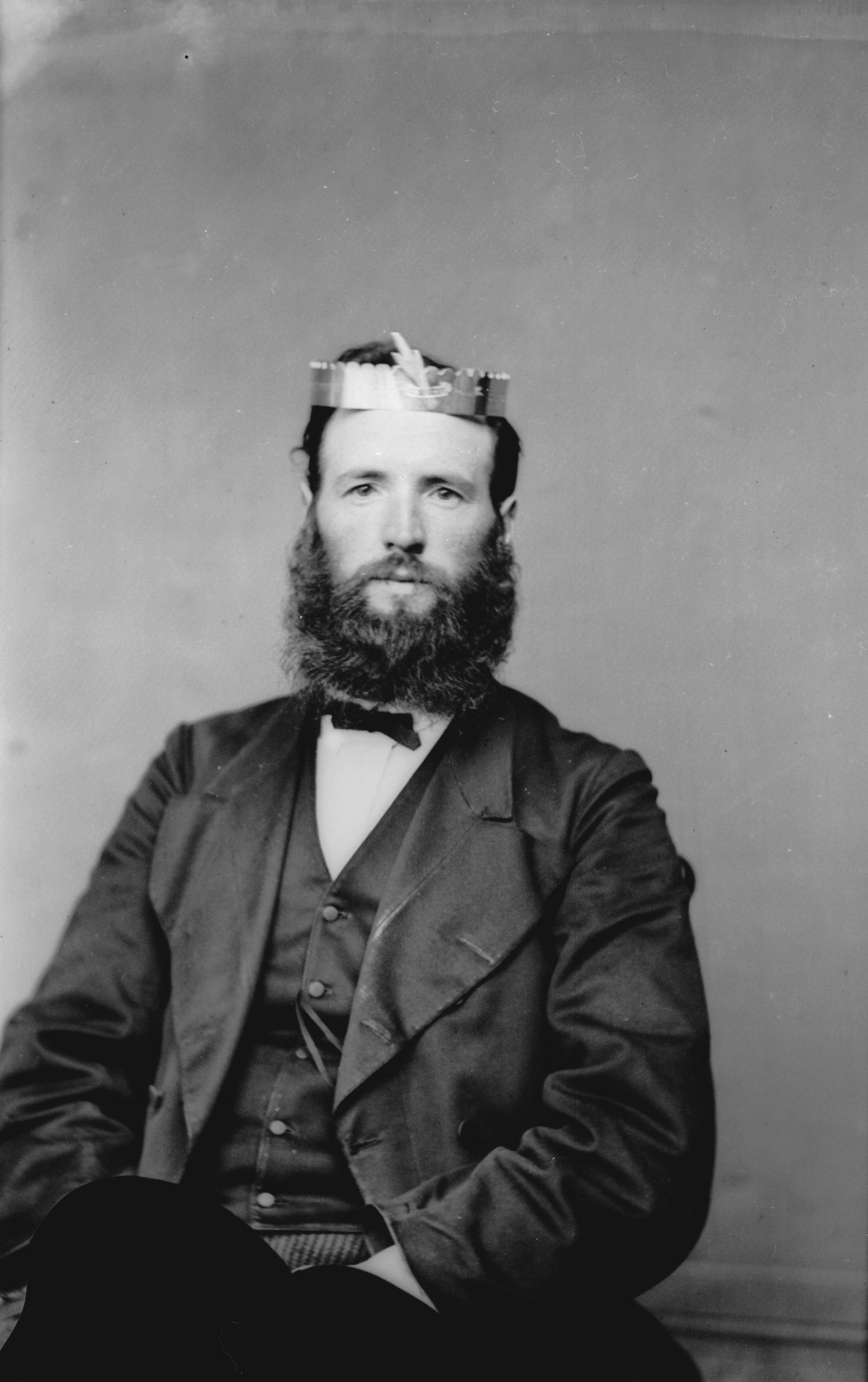
A crown was first awarded for composing a pryddest at the Holywell Crowned Eisteddfod of 1869. It was won by Mawddwy Jones of Dolwyddelan seen wearing the crown here.

The earliest crown in the Museum collection was won by the poet Ceiriog (John Ceiriog Hughes) at the Great Llangollen Eisteddfod of 1858. His winning love poem ‘Myfanwy Fychan o Ddinas Brân’ became an instant hit in Wales. Ceiriog’s crown is made of real birch sprigs and leaves that have been silvered. It was apparently a custom in the Ceiriog Valley for a girl to give a birch crown to her loved one as a token of love.